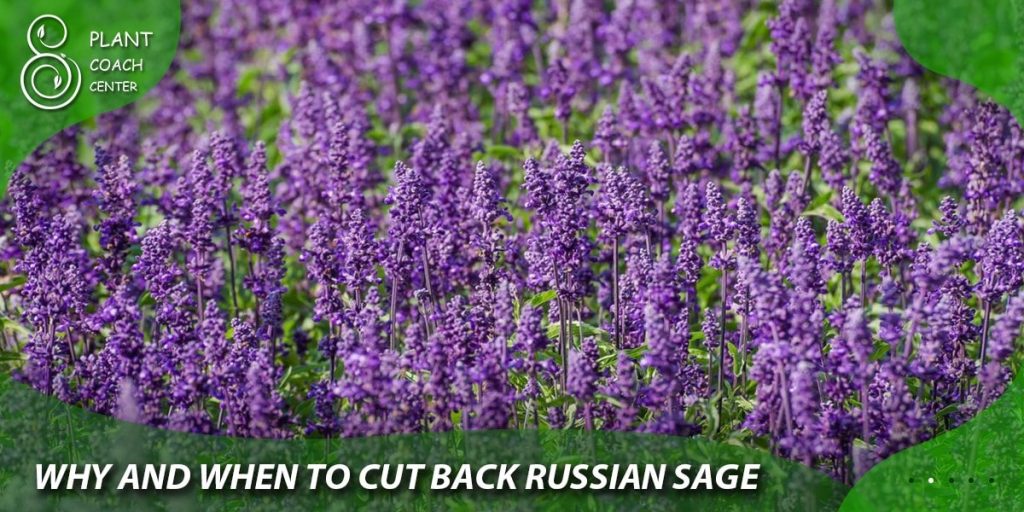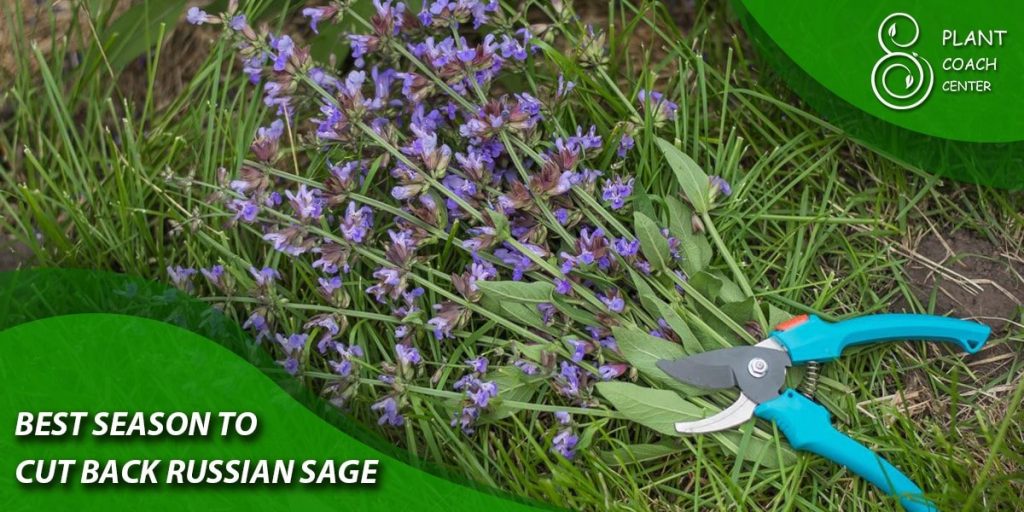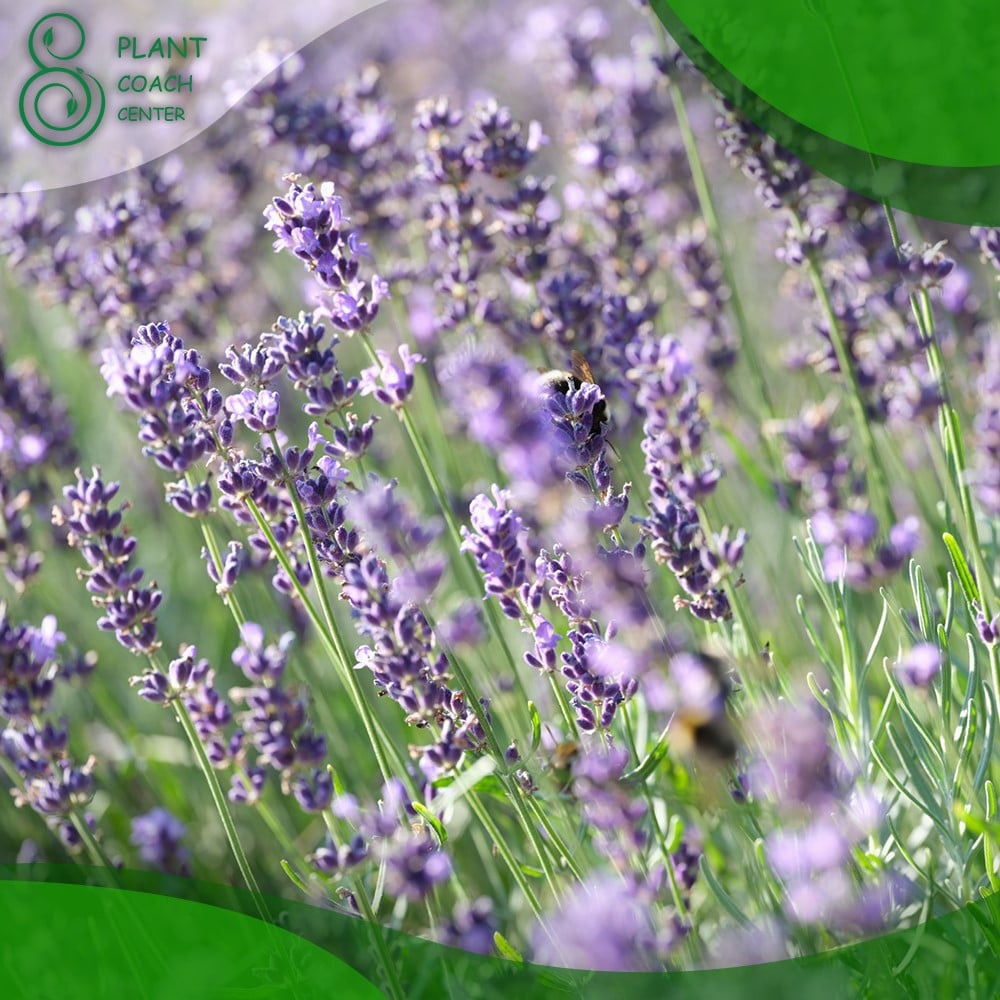When to Cut Back Russian Sage
Russian sage is a beautiful and versatile perennial plant that adds an elegant touch to any garden or landscape. With its silver-gray foliage and delicate lavender-blue flowers, Russian sage is a favourite among gardeners. However, like any other plant, it requires proper care and maintenance to thrive. One crucial aspect of caring for Russian sage is knowing when and how to cut it back.
Understanding Russian Sage Growth Patterns
To effectively prune Russian sage, it’s essential to understand its growth patterns and life cycle. Russian sage is a semi-woody perennial that typically grows in upright, bushy clumps. It reaches a height of about 2 to 4 feet (0.6 to 1.2 meters) with a spread of 3 to 4 feet (0.9 to 1.2 meters). This plant features deeply lobed leaves and produces abundant flower spikes that attract pollinators like bees and butterflies.
Russian sage goes through distinct growth stages throughout the year. In spring, new growth emerges from the base of the plant, while in summer, it develops long, flowering stems. By fall, the flowers fade, and the plant prepares for dormancy during winter. Understanding these growth patterns is crucial for determining the appropriate time to cut back Russian sage.

Why and When to Cut Back Russian Sage
Pruning Russian sage serves several purposes and offers numerous benefits. First, it helps maintain the plant’s overall health and vigour. By cutting back old or damaged growth, you encourage the development of new, robust stems and foliage. Additionally, pruning improves air circulation, reducing the risk of fungal diseases and promoting the plant’s longevity.
Timing is crucial when it comes to cutting back Russian sage. The best time for pruning depends on various factors, including seasonal considerations, plant health, and local climate. Let’s explore each of these factors in more detail:
Seasonal Timing
The ideal time to cut back Russian sage is in late winter or early spring before new growth emerges. Pruning during this time allows the plant to channel its energy into developing new shoots and foliage. However, avoid pruning too early in winter when the plant grows.
Assessing Plant Health and Vigor
Another aspect to consider is the overall health and vigour of the plant. Suppose you notice any disease, pest infestation, or weakened growth. In that case, cutting back Russian sage as soon as possible is advisable. Pruning can help remove diseased or damaged stems and promote new, healthy growth.
Considering Local Climate
Your climate is crucial in determining the appropriate pruning time. If you live in an area with mild winters, you might be able to delay pruning until early spring. In colder regions, it’s advisable to prune Russian sage in late winter to prevent frost damage to new growth.
Signs That Indicate the Need for Pruning
In addition to considering the timing, certain signs indicate when it’s necessary to cut back Russian sage. By paying attention to these signs, you can ensure your plant remains healthy and attractive. Here are some common indicators that pruning is needed:
Overcrowding and Encroachment
Russian sage tends to spread and may start encroaching on other plants or garden pathways. If you notice the plant becoming overly crowded or infringing on neighbouring vegetation, it’s time to prune and create space.
Dead or Damaged Stems
Russian sage can become woody, and older growth may die back. Pruning allows you to remove these dead or damaged stems, promoting the growth of fresh, vigorous shoots.
Leggy or Floppy Growth
If your Russian sage starts to exhibit leggy or floppy growth with long, spindly stems, it’s an indication that pruning is necessary. Cutting back the plant encourages compactness and helps prevent it from becoming too top-heavy.

Pruning Techniques for Russian Sage
Now that we understand the importance of pruning Russian sage and have determined the appropriate timing let’s delve into the pruning techniques to ensure the successful maintenance of this lovely plant.
Tools and Equipment
Before you begin pruning, gather the necessary tools and equipment. You’ll need a pair of sharp pruning shears or hedge clippers, clean gardening gloves, and a sharp bypass pruner for more precise cuts. Ensure that your tools are clean and sterilized to prevent the spread of diseases.
Preparing for Pruning
Start by assessing the plant and identifying the areas that require pruning. Look for dead or damaged stems, overcrowded sections, or any leggy growth that needs attention. It’s also a good idea to remove any weeds or debris around the base of the plant before you begin.
Step-by-Step Pruning Guide
- Removing Old Growth: Begin by cutting back the old growth from the previous year. Look for woody or brittle stems that show no signs of new growth. Using your pruning shears or hedge clippers, make clean cuts close to the base of the plant. This encourages fresh growth from the plant’s crown.
- Cutting Back Spent Flower Stalks: Russian sage produces beautiful flower spikes during the summer, but these eventually fade and dry out. To maintain the plant’s appearance and promote reblooming, it’s advisable to remove the spent flower stalks. Trim them back to just above a healthy bud or leaf node.
- Promoting Compactness and New Growth: To encourage a compact and bushy shape, selectively prune leggy or floppy stems. Identify long, spindly growth and make cuts just above a healthy bud or leaf node. This helps redirect the plant’s energy into producing more foliage and flowers.
- Dealing with Disease or Pest Issues: If you notice any signs of disease, such as powdery mildew or leaf spot, or pest infestations, it’s crucial to address them during pruning. Remove any affected stems or leaves, making sure to dispose of them properly to prevent the spread of diseases.
Aftercare and Maintenance Tips
Proper aftercare and maintenance are essential to ensure your Russian sage’s long-term health and vitality. Here are some tips to keep in mind:
Watering and Irrigation Requirements
Russian sage is a drought-tolerant plant, but regular watering is necessary during its establishment period. Provide adequate water to newly planted Russian sage until it develops a strong root system. Once established, the plant requires little supplemental watering except during prolonged dry spells.
Fertilization Needs
Russian sage generally thrives in average to poor soils and doesn’t require heavy fertilization. However, incorporating well-decomposed compost or organic matter into the soil during planting can provide a nutrient boost. Avoid excessive nitrogen-rich fertilizers, as they may encourage excessive foliage growth at the expense of flowers.
Mulching and Weed Control
Apply a layer of organic mulch, such as wood chips or straw, around the base of the Russian sage plant. Mulching helps conserve moisture, suppresses weed growth, and regulates soil temperature. Regularly inspect the area for weeds and remove them promptly to reduce competition for resources.
Division and Propagation
Russian sage can be propagated through division or stem cuttings. The division is best done in early spring, while stem cuttings can be in late spring or early summer. Dividing the plant every few years helps maintain its vigour and prevent overcrowding.

Common Problems and Troubleshooting
Russian sage is generally a resilient plant but can face certain problems and challenges. Being aware of these issues and knowing how to address them promptly can help keep your Russian sage healthy and thriving. Here are some common problems associated with Russian sage and their potential solutions:
Pests
- Aphids: Aphids are tiny, soft-bodied insects that can cluster on the new growth of Russian sage, sucking sap from the leaves. To control aphids, you can spray a strong blast of water on the affected foliage to dislodge them or use insecticidal soap according to the product instructions.
- Spider Mites: Spider mites are tiny pests that can cause webbing on the foliage and leave stippled, discoloured leaves. Regularly misting the plant with water or using insecticidal soap can help control spider mite infestations.
Diseases
- Powdery Mildew: Powdery mildew appears as a white, powdery coating on the leaves and stems of Russian sage. It thrives in humid conditions and poor air circulation. To prevent powdery mildew, ensure proper spacing between plants, provide good air circulation, and avoid overhead watering. If necessary, apply a fungicidal spray specifically labelled for powdery mildew.
- Leaf Spot: Leaf spot is characterized by dark, circular or irregular spots on the leaves. Fungal pathogens cause it and can be prevented by practicing good sanitation, such as removing and disposing of infected leaves. Applying a copper-based fungicide may also help control leaf spots.
Environmental Stressors
- Extreme Heat: Russian sage is generally heat-tolerant but can suffer during prolonged periods of intense heat. To help your plant cope, provide shade during the hottest part of the day, ensure adequate watering, and apply a layer of mulch to conserve soil moisture.
- Drought Stress: While Russian sage is drought-tolerant once established, it still benefits from regular watering during extended dry spells. Water deeply and infrequently, allowing the soil to dry out slightly between waterings.
- Cold Temperatures: Russian sage is generally hardy, but severe cold or prolonged freezing temperatures can potentially damage the plant. If you live in an area with harsh winters, apply a layer of mulch around the base of the plant to insulate the roots and provide some protection. During extreme cold snaps, consider covering the plant with burlap or a frost blanket.
You can catch any pest or disease issues early on by monitoring your Russian sage regularly. Promptly address problems with appropriate cultural practices, such as providing the right growing conditions and removing affected plant parts. It’s also important to practice good garden hygiene, such as cleaning up fallen debris and disposing of infected plant material, to prevent the spread of pests and diseases.
Remember that prevention is key, so providing optimal growing conditions, such as proper sunlight, well-draining soil, and adequate spacing between plants, can go a long way in reducing the likelihood of problems. Regularly inspect your Russian sage for signs of stress or issues, and take immediate action to maintain its health and vitality.

Asked Questions
Can Russian Sage Be Cut Back in the Fall?
While it’s generally recommended to prune Russian sage in late winter or early spring, there are instances where cutting it back in the fall might be necessary. If you live in an area with harsh winters or your Russian sage is susceptible to winter damage, you can cut it back in the fall. However, it’s important to time the pruning before the first hard frost to allow the plant to prepare for dormancy.
Will Cut Back Russian Sage Promote Reblooming?
Yes, cutting back Russian sage can help promote reblooming. By removing spent flower stalks and pruning back leggy growth, you stimulate the plant to produce new buds and blooms. Regular pruning also prevents the plant from becoming top-heavy and encourages a more compact, bushy shape with abundant flowers.
Can Russian Sage Survive Harsh Winters?
Russian sage is generally hardy and can withstand cold temperatures. However, extremely harsh winters or prolonged periods of freezing temperatures can potentially damage the plant. To protect your Russian sage during winter, apply a layer of mulch around the base to insulate the roots and provide some shelter. Consider covering the plant with burlap or a frost blanket in areas with severe winter conditions for added protection.
Final thoughts
Knowing when to cut back Russian sage is essential for maintaining its health, appearance, and overall vigour. By understanding the plant’s growth patterns, assessing the timing based on seasonal considerations and plant health, and employing proper pruning techniques, you can ensure that your Russian sage thrives year after year.
Remember to prune Russian sage in late winter or early spring, removing old growth, spent flower stalks, and any leggy or damaged stems. Providing adequate aftercare and maintenance, such as appropriate watering, mulching, and occasional division, will further support the plant’s well-being.
You can promptly address any issues by being attentive to common problems like pests, diseases, and environmental stressors. Through regular plant coaching and maintenance, you can enjoy the beauty and benefits of Russian sage in your garden or landscape for many seasons.
Gardening is a journey of learning and experimentation, so don’t be afraid to adapt your approach based on your specific climate and local conditions. With proper care and pruning, your Russian sage will continue to delight you with its graceful presence and vibrant blooms.
When is the best time to prune Russian sage?
Late winter or early spring.
Can Russian sage survive harsh winters?
Yes, with proper protection and care.
How can I control pests on my Russian sage?
Use water sprays or insecticidal soap.







